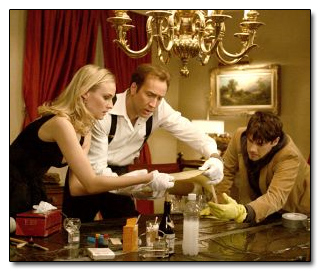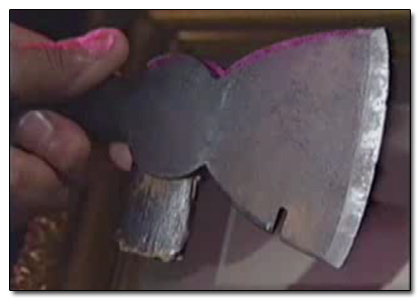5 Pieces of Junk That Turned Out to be Invaluable Artifacts

Recently there was an inspirational story about a person who found a bottle in their basement, containing some mysterious scraps with writing that turned out to be a long-lost message from some concentration camp survivors.
But that is actually just the most recent in a long line of amazing, often ancient artifacts turning up in random places like garage sales or just collecting on the same shelf where somebody was storing their old comic books.
The $800,000 Stradivarius Violin

Lost:
Have you ever sat your coffee on top of your car, intending to grab it before you get behind the wheel, only to forget about it? Then you go driving off and it falls onto the road somewhere while you stare confused at your empty cup holder?
What would you say is the worst possible scenario for something like that? Other than, say, leaving your newborn infant up there?
That brings us to the story of The Duke of Alcantara, which is not a person but a 267-year-old Stradivarius violin (when an instrument is valued at $800,000, they tend to give it a pimp name). The violin was donated to UCLA at some point in its long lifespan, and wound up in the hands of David Margetts, the second violinist for the UCLA string quartet. He borrowed the violin on August 2, 1967 from the university for a rehearsal in Hollywood.

An $800,000 loaner? Yeah, UCLA apparently trusted the shit out of David Margetts.
They shouldn't have. He was on his way home and stopped to get groceries, leaving his car unlocked. When he got back, he was minus one violin and was in some serious shit with UCLA. Surely some thieves had stolen it, recognizing it for its rarity and extraordinary value! They were probably selling it to sophisticated international criminals that very moment!
Found:
Fast forward 27 years to 1994. A violin dealer repairing a (you guessed it) violin, realized that, holy shit, he was working on a Stradivarius two and a half centuries old and worth more than he made in a decade.
He looked up the particular violin and found out it had been missing from UCLA all this time. The violin was now owned by an amateur violinist by the name of Teresa Salvato, who had gotten it in her divorce settlement.

Wondering how the musical equivalent of that guy who always "totally has to show you a song he wrote" at parties ended up with an $800,000 violin, UCLA did a little asking around and found out the violin was given to Teresa's husband by his aunt... who found the Stradivarius on the side of a freeway one evening in 1967.
So what we were saying earlier, about the cup of coffee? Yeah, it appears that's what David did with the violin.
The Declaration of Independence

Lost:
Back when they wrote up the Declaration of Independence, somebody thought to make copies. Otherwise someone could leave it on top of their car or something, and the colonies would have fallen back under British rule.
Around 500 copies were printed on July 5, 1776. Now the original handwritten document is in the Smithsonian museum, but of the 500 copies, only 24 are still around today. So even those copies have a value that's hard to calculate, even though only the original has the National Treasure secret map on the back.

"If we don't solve this riddle, History will eat itself!"
Found:
Donald Scheer was a man who enjoyed picture frames. Fuck whatever was in the picture, he just liked the frames.
One day at a flea market he came across a painting of a farm scene. He was so taken with the ornate frame that he bought it for a whopping $4. Once at home, he hastily went to work detaching the worthless picture from the precious, precious frame, and that was when the frame fell apart.
Holding the broken frame in his hands and shouting whatever curse words frame collectors know, he found a small folded-up piece of paper. Upon opening it he realized that he was holding the Declaration of fucking Independence.

So we said it's hard to calculate the value of such a document, but it's not impossible: he sold it at auction for $2.42 million.
We have to wonder if he didn't run and dig that farm painting out of the trash, to find out what that shit was worth.
The World's Most Famous Hatchet

Lost:
Lizzie Borden allegedly committed two of the most famous murders in American history. Way back in August 4, 1892 in Fall River, Massachusetts, Borden was a 32-year-old spinster who took a hatchet and went to town on her dad and stepmom.

She was tried and then acquitted for the murders, in a trial that became a media sensation in its day--and, in fact, it was the first media sensation murder trial. No one else was ever arrested or suspected of the murders, leading everyone to believe that ghosts did it, seeing as how back then ghosts and witches were blamed for 89 percent of all murders thanks to police who didn't like to do a lot of paperwork.
Found:
More than 70 years later, a woman was going through some of her father's things in the attic when she stumbled across an old wash basin containing a broken hatchet - and a freaking skull. A skull that had a huge hatchet-shaped gash in the side.
Instead of immediately assuming her father was secretly a killer, she sent the items to the Fall River historical society. It turned out the hatchet was, of course, the one Borden had allegedly used to hack her parents to death. And the skull? It Lizzie's father's.

The woman who found them was the daughter of Andrew Jennings, Lizzie Borden's lawyer (an apparently damned fine one, since Lizzie got off). It turned out that after the trial, Lizzie had given the hatchet head and her dad's skull to Jennings as a gift.
We're not sure if this is the worst or best gift in history, but apparently Jennings believed the former since he tossed the murder weapon and shattered skull in the old wash basin and forgot about them while they sat there in his house for the rest of his life. Say what you want about Andrew Jennings, but that man totally did not believe in hauntings.
The Gnostic Gospels

Lost:
The story of how the non-Biblical Christian text known as the Gnostic Gospels were found has such a DaVinci Code quality to it, you almost want to call bullshit.
If you're not familiar, the Gnostic Gospels are a series of early Christian writings--estimated to have been written 1600 years ago--that were about Jesus' teachings, but didn't make it into the Bible. Mainstream Christians reject them completely, others see them as the Bible's DVD deleted scenes.
Found:
In 1945, an Egyptian farmer, Mohammed Ali Samman, was looking for some sabakh, an organic fertilizer (we're pretty sure it's just shit). During his search for it in a cave, he found an old, red clay jar.

He really didn't want to open it for fear of ghosts or curses, but as The Legend of Zelda has taught us, clay jars are usually filled with rupees, so he took his chances and smashed it. Inside he didn't find rupees but instead found somewhere near a dozen old, leather bound books. Apparently pissed at the lack of rupees, he just went ahead and threw the books on his kindling pile.
The man's brother, who looked at the documents and realized there was something like a Bible Part 2 in his hands, convinced Mohammed to sell them instead. The documents were saved from destruction but the brothers had a falling out. So instead of selling them piece by piece as they planned, they took them to a nearby priest and said, "Here, you can have this. It's, like, extra Bible or something."

The priest, being a man of God and realizing the significance of the artifact and the almost miraculous nature of the discovery--they sat in that cave undisturbed for untold centuries--promptly went about pawning them off for cash to whatever antique dealers would take them.
A museum in Cairo got a hold of some of them and started desperately trying to gather the rest of the documents before they could get lost or some dumbass could use them to line his canary's cage. It would take 30 years for the museum to finally get them all back under the same roof.
The 3,000-Year-Old Sacred Egyptian Liver Jar

Lost:
So let's say it's 3,000 years ago, in Egypt. You're about to die, but that's OK because you know that, according to tradition, they're going to stick your organs into a series of pots where the goddess Isis will watch over them, until you need them again.
Three millennia later, your liver pot is being used as a lawn ornament.

Found:
How many of you have some old-timey piece of furniture you inherited from your family? Or maybe an old vase, or some ugly little statue thing?
Well a woman in the U.K. wound up with a chipped terracotta pot with this Egyptian head thing on the lid, after her uncle left it to her. It spent some time in her garage and then she decided to just stick it on her patio. It sat there, in the rain and with cats probably pissing on it, for 20 years.

Finally on a whim she thought, "well, the head part is kind of shaped like an Egyptian Pharaoh or something, I'll take it to some experts and see what they say."
What they said was that the goddamned thing was made a thousand years before the freaking birth of Christ.
Experts say the jar was specifically made to hold the liver of the deceased, though there was no liver inside. We're guessing some old man in Scotland is using it as a paperweight.
And check out what else our ancestors left us to treat like dog shit, in 11 Modern Technologies That Are Way Older Than You Think and 6 Insane Discoveries That Science Can't Explain.
And visit Cracked.com's Top Picks where there may or may not be an ancient "fair and balanced" article from FoxNews (there isn't).